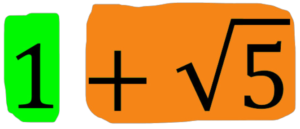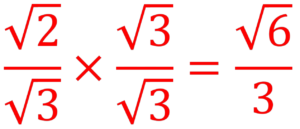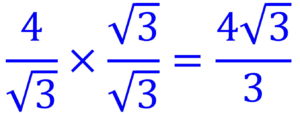Surds: Questions, Steps, Examples & Worksheet
Surds
- Surds are an important part of mathematics that many students find challenging.
- Surds play a crucial role in expressing exact values, particularly in geometry and algebra.
- They provide a means to represent square roots without relying on decimal approximations, allowing for more accurate mathematical calculations.
In this article, we will discuss:
- What is a Surd?
- Explore Surds – Addition, Subtraction, Multiplying, Division and Rationalisation.
Here is one more link to practice a few extra questions: Maths Genie Surds Questions
What is a Surd?
- A surd is a square root or any root that cannot be simplified to a rational number.
- Surds are represented by the symbol √ and are commonly found in mathematics and physics.
- The most basic example of a surd is the square root of 2 (√2), which cannot be expressed as a fraction of two integers.
Surds - Addition and Subtraction
- Adding and subtracting surds can be tricky, but there is a simple rule to follow.
- To add or subtract surds, the terms inside the roots must be the same.
- For example, we can add 2√2 and 5√2, but not 3√2 and 2√5.
Let’s consider the following example:

To simplify this expression, we first add and subtract the terms with the same root, giving:

Simplifying further, we get:

Multiplying Surds
- Multiplying surds involves multiplying the terms outside the roots and the terms inside the roots separately.
- For example, to multiply √2 by √3, we multiply 2 by 3 to get 6 and then take the square root of 6.

- Also, the part with Surd is multiplied with Surd and the integer part is multiplied with the integer part:
- For example:

Let’s consider the following example:

To simplify this expression, we use the distributive property of multiplication, giving:

Simplifying further, we get:

Surds Division
- Dividing surds is similar to multiplying them, but we need to take the reciprocal of the divisor and then multiply.
- For example, to divide √2 by √3, we first take the reciprocal of √3, which is 1/√3. Then, we multiply √2 by 1/√3 to get (√2 / √3) = √6/3.

Surds Rationalisation (Simpler)
- Sometimes, we need to simplify an expression that contains a surd in the denominator. This process is called surd rationalisation.
- The simpler method involves multiplying the numerator and denominator by the surd in the denominator.
- For example, to rationalise 4/√3, we multiply the numerator and denominator by √3, which gives:

Surds Rationalisation (Higher)
- The higher method of surd rationalisation involves multiplying the numerator and denominator by the conjugate of the surd in the denominator.
- The conjugate is the surd with the opposite sign between the two terms. For example, to rationalise 1/(√3 + √2), we multiply the numerator and denominator by (√3 – √2), which gives:


Solved Example:
Question 1: Rationalise the denominator of the fraction: (5√2) / (2 – √2)
Solution:
- Step #1: Multiplying the numerator and denominator by the conjugate of the denominator,
we get:
[(5√2) / (2 – √2)] × [(2 + √2) / (2 + √2)]
- Step #2: Simplifying the expression, we get:
[(5√2) (2 + √2)] / [(2 – √2) (2 + √2)]
[10√2 + 5 × 2] / (2² – √2²)
(10√2 + 10) / 2
5√2 + 5
Question 2: Rationalise the denominator of the fraction: (1 + √3) / (2 – √3)
Solution:
- Step #1: Multiplying the numerator and denominator by the conjugate of the denominator,
we get:
[(1 + √3) / (2 – √3)] × [(2 + √3) / (2 + √3)]
- Step #2: Simplifying the expression, we get:
[(1 + √3) (2 + √3)] / [(2 – √3) (2 + √3)]
(2 + √3 + √3 + √9) / (2² – √3²)
(2 + 2√3) / 1
2 + 2√3
Practice Questions
Question 1: Rationalize the denominator: (2 / (√5 + √3)).
Answer :Solution:
To rationalize the denominator, we multiply both the numerator and the denominator by the conjugate of the denominator:
(2/(√5 + √3)) x (√5 - √3/√5 - √3)
= (2√5 - 2√3)/(5 - 3)
= (2√5 - 2√3)/2
= √5 - √3
Question 2: Rationalize the denominator: (3/(√10 + √2)).
Answer :Solution:
To rationalize the denominator, we multiply both the numerator and the denominator by the conjugate of the denominator:
(3/(√10 + √2)) x (√10 - √2/√10 - √2)
= (3√10 - 3√2)/(10 - 2)
= (3√10 - 3√2)/8
Worksheet on Surds
Question 1: Simplify √12
Question 2: Rationalize the denominator: (2/√3)
Question 3: Rationalize the denominator: (3/√2).
Question 4: Rationalize the denominator: (1/(√7 + √3))..

